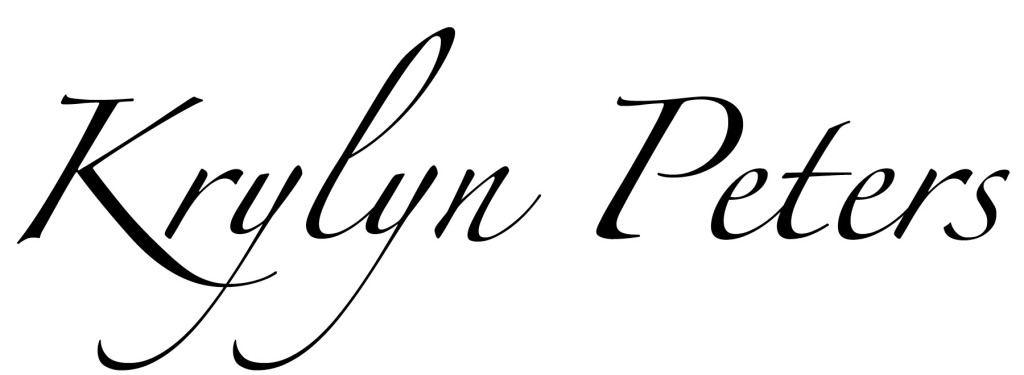Category Archives for SelfCare
Ready to Clear Away That Which Doesn’t Serve You?
 April is prime time to tackle that dreaded Spring Cleaning. Out with the old, in with the new. Time to dust off that which no longer serves a purpose. The connection between clutter and our mood is astounding. If you don’t believe me, try to have a coherent thought, finish a project, or feel at ease in a room filled with piles of paper, unpaid bills, unanswered requests, stuff not put away, trash, etc. And if that’s not enough, think about all the stuff inside that gets in the way – the negative thoughts, inner critical voice, fear, worry, etc. It’s a wonder we get anything done at all sometimes.
April is prime time to tackle that dreaded Spring Cleaning. Out with the old, in with the new. Time to dust off that which no longer serves a purpose. The connection between clutter and our mood is astounding. If you don’t believe me, try to have a coherent thought, finish a project, or feel at ease in a room filled with piles of paper, unpaid bills, unanswered requests, stuff not put away, trash, etc. And if that’s not enough, think about all the stuff inside that gets in the way – the negative thoughts, inner critical voice, fear, worry, etc. It’s a wonder we get anything done at all sometimes.
When we are distracted by the inner and outer clutter of our lives, we miss a lot. Sure we may be able to function, but are we truly enjoying life, our work, and the people around us? Or are we just holding it together hoping nothing (and no one) will come along to send us over the edge?
If you’re ready to take out what’s holding you back and move forward to a life of more ease and less stuff, please join me for April’s FREE Teleseminar… Clearing the Clutter: How 15 Minutes Could Save Your Sanity.
In this teleseminar, I’ll cover:
- The Different Types of Clutter Affecting Your Mind, Body, and Spirit (it’s not all about the stuff you can see)
- The Connection Between How You Care for Your Stuff and How You Feel About…Everything
- 3 Steps You Can Take to Clear Out What’s Holding You Back So You Can Move Forward
Don’t delay. Sign up today. The live call is coming soon. But don’t worry, if you can’t attend live, you can still sign up and get access to the recording. Simply go to the REGISTRATION page and enter your name and email to get signed up.
Singing for Autism
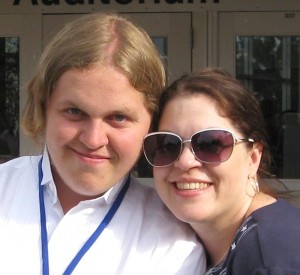
Me and My Awesome Son!
When my sound engineer, John Mahoney of Ravenpheat Studios in Glendale, Arizona, contacted me regarding a project he was working on to shed light on tolerance and accepting people for who they are, I knew I had to be a part of it. Since my son’s diagnosis of Asperger’s Syndrome, I have wanted to write a song somehow outlining a part of our journey. And John’s project gave me the perfect opportunity. My song “Just Like You” is told from the perspective of someone diagnosed with Asperger’s Syndrome, and talks about the experiences of feeling different, being treated differently, and having difficulty reading other people’s emotions. I consulted my son as I was writing the song and he said it’s an accurate portrayal…phew!
We All Shine On is a volunteer CD project combining the talents of musicians, poets, singers, and songwriters from around the United States. Proceeds from the CD will benefit the following charities:
- Yoomee Adventures, teaches bully/teasing/acceptance awareness and presents books and music at no cost to schools, libraries and children’s hospitals.
- Just One Voice, Just One Voice is an organization dedicated to improving the lives of people in Kenya and other developing countries.
- The Trevor Project, The Trevor Project is the leading national organization focused on crisis and suicide prevention efforts among lesbian, gay, bisexual, transgender and questioning (LGBTQ) youth.
While the project is done, John is still looking for help with sales and distribution to allow the above charities to benefit as much as possible. So if you or someone you know could help with that part, please contact me and I’ll get you in touch with John.
But in the meantime, please enjoy listening (below) to “Just Like You,” my song about autism written as a tribute to my wonderful, talented, intelligent, creative, sometimes misunderstood, blessing of a son…
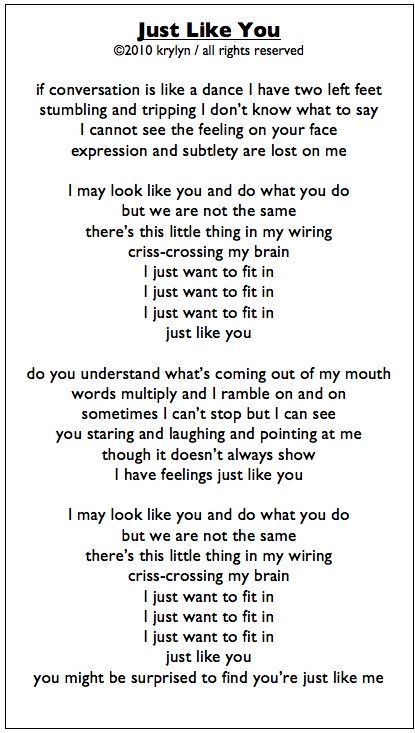
How Clutter Affects What You Think and How You Feel

The connection between clutter and our mood is astounding. If you don’t believe me, try to have a coherent thought, finish a project, or feel at ease in a room filled with piles of paper, unpaid bills, unanswered requests, stuff not put away, trash, etc. And if that’s not enough, think about all the stuff inside that gets in the way – the negative thoughts, inner critical voice, fear, worry, etc. It’s a wonder we get anything done at all sometimes.
When we are distracted by the inner and outer clutter of our lives, we miss a lot. Sure we may be able to function, but are we truly enjoying life, our work, and the people around us? Or are we just holding it together hoping nothing (and no one) will come along to send us over the edge?
I want you to really think about how you care for your clutter. Remember in a previous article, 3 Types of Clutter That May Be Holding You Back, I talked about the clutter in your home (physical), heart (emotional), and head (mental). Well, they are all connected, which is both good and bad news. Let me take you through a scenario and see if you can relate…
You come home from a very long, stressful day at work. You walk in the house to find you don’t have enough room to put your purse, briefcase, or whatever else you’re carrying because every surface (table, chair) is packed with stuff. You set the stuff you’re carrying on the floor in a space that hasn’t already been taken over by clutter.
Thoughts start to creep in: I can’t deal with this right now. Why can’t someone else just clean this up. No one cares enough to help me out. Can’t they see how stressed I am. I need a break. I hate working these many hours. I don’t have time for myself. Why can’t I make myself more of a priority.
Emotions start to bubble over: Resentment at your family for not cleaning up. They have enough time to watch TV and play video games while you are slaving away at work all day. Anger at your boss, employer, or clients for taking all your time and energy to the point you don’t have enough left over to deal with simple tasks like cleaning or having time to yourself when you get home.
So you can see, what started off as not having space to put your stuff can spiral into negative thoughts and feelings. And you know it’s not about the stuff. It’s not about the space. It’s not even really about what others in your home are (or aren’t doing). It’s about all that other stuff that it represents. How you feel about yourself and your situation. It’s all inter-connected.
Now for the good news. Knowing that all the clutter is connected, once you start working on one form of clutter, you will notice a shift in the others. Let’s look that scenario again from a different perspective…
You come home from a very long, stressful day at work. You walk in the house to find you don’t have enough room to put your purse, briefcase, or whatever else you’re carrying because every surface (table, chair) is packed with stuff. You set the stuff you’re carrying on the floor in a space that hasn’t already been taken over by clutter.
You take a deep breath and decide to let go of any negative thoughts that start to creep in and instead think things like: I just had a really tough day at work. I need a break, so I’m going to take one right now. I deserve to take some time for me when I come home from a stressful day. Once my break is over, I’ll decide what to do next.
Because you didn’t go to the negative thoughts, your emotions don’t spiral out of control. Instead of feeling resentful and angry, you feel calmer because you took some time for yourself, which is really what you needed. Then from that calmer, more centered place you can decide what you want to do about the physical clutter.
It takes commitment and consistent practice to get from scenario A to scenario B, but it can be done. The trick is remembering to put yourself as a priority and not let yourself slip down the dark hole of negative thoughts and feelings. Another great way to tackle clutter is to start with clearing the physical clutter around you. Remember, a change in one type of clutter affects the others. So if you begin clearing your physical space, you’ll notice you feel better about yourself and life. Give it a try!
For more ideas on tackling clutter and feeling better about yourself, please join me for my next monthly FREE Telseminar, “Clearing the Clutter: How 15 Minutes Could Save Your Sanity.” Simply go to the REGISTRATION page at https://krylyn.com/dev/free-teleseminars/clearing-the-clutter/, and enter your name and email to get signed up. Even if you can’t attend the live call, you will get access to the recording of the call, but only if you register.
3 Types of Clutter That May Be Holding You Back
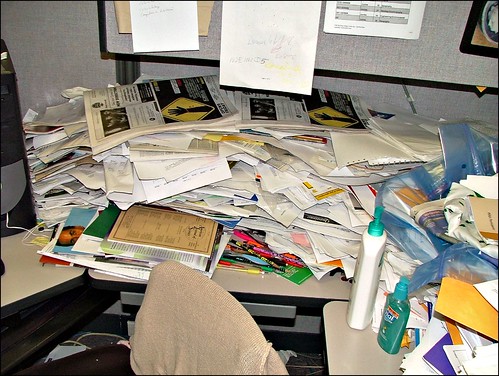 April is prime time to tackle that dreaded Spring Cleaning. Out with the old, in with the new. Time to dust off that which no longer serves a purpose. You may be thinking about clearing out all that stuff you can see around you, rolling up your sleeves, getting out those cleaning supplies, and cranking up some fast-paced music to help keep you motivated. But what about all the stuff you can’t see, the stuff that lurks in the hearts and minds of humans everywhere?
April is prime time to tackle that dreaded Spring Cleaning. Out with the old, in with the new. Time to dust off that which no longer serves a purpose. You may be thinking about clearing out all that stuff you can see around you, rolling up your sleeves, getting out those cleaning supplies, and cranking up some fast-paced music to help keep you motivated. But what about all the stuff you can’t see, the stuff that lurks in the hearts and minds of humans everywhere?
Clutter certainly involves the stuff that accumulates in our homes, offices, and cars. Things like papers, clothes, knick knacks, books, dishes, trash, collectibles, etc. But more broadly defined, clutter is anything (seen or unseen) that gets in the way of you living a balanced, peaceful, simple, harmonious, juicy life. Clutter adds to your stress and drains you of what precious little time and energy you have. Can you think of anything besides physical items that do that? I know I sure can. Here’s just a few:
- Negative thoughts
- Painful feelings
- The idea that you have to do everthing yourself
- Perfectionism
As someone who has spent the last several years paying close attention to that which doesn’t serve me and systematically eliminating it (or reducing it) from my life, I’ve come up with three categories of clutter:
Clutter in the Home. This is the PHYSICAL CLUTTER, or stuff we typicall can see that is getting in our way. For many of this, this includes the piles of paper, mail, magazines, newspapers, unfinished projects, clothes, and pretty much anything that occupies our tables, floors, and chairs. It’s the stuff not put away that either doesn’t have a place to go (because all the places are filled with other stuff) or is just one more thing we don’t have the time or energy do deal with.
Clutter in the Heart. This is the EMOTIONAL CLUTTER, or the feelings we have that we either ignore, stuff down deep inside, or let out in ineffective ways. This often involves unresolved issues with relationships, like parents, siblings, children, friends, and other loved ones.
Clutter in the Head. This is the MENTAL CLUTTER, or thoughts that ruminate in our over-active brains. This can include our negative thoughts about ourselves, others, and the world. It can also include constantly thinking about our past or future at the expense of enjoying our present.
To learn how to tackle the clutter in your head, heart, and home, please join me for my next monthly FREE Telseminar, “Clearing the Clutter: How 15 Minutes Could Save Your Sanity.” Simply go to the REGISTRATION page at https://krylyn.com/dev/free-teleseminars/clearing-the-clutter/, and enter your name and email to get signed up. Even if you can’t attend the live call, you will get access to the recording of the call, but only if you register.
Photo: World’s Messiest Office Cubicle Discovered in Colorado © by Jeffrey Beall
The Rose – An Ode to Love
One of my mother’s favorite songs was “The Rose” by Bette Midler. She and I sang it as a duet many times, as did she and my sister. To honor our mother on her death bed just over a week ago, my sister and I sang it to her one final time, to help ease her transition to the next world. If you haven’t heard the song, listen and listen close. It is an ode to love, in all its wonderful and bittersweet forms. If you’ve heard it before, listen again and be reminded just how fragile love is. Enjoy!
Making Tough Decisions: Doing What’s Right, Rather Than What’s Expected
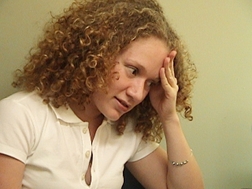
Have you ever been faced with a challenge where those around you – family, friends, colleagues – give their advice on what you should do? I think we’ve all been there. Sometimes the advice is welcomed and sometimes it’s not. Sometimes it fits with what you are thinking you want to do and sometimes it doesn’t. But remember, the only person ultimately responsible for making the decision and living with the consequences of that decision is YOU.
So many times we seem to want others to just tell us what to do. Maybe it’s because we’re afraid to actually make the decision. Maybe it’s because if things don’t work out, we can blame someone else. But when we don’t trust ourselves to make the best decision for us, we can really be playing a dangerous game –one where we reinforce the belief that we cannot trust ourselves, or that we aren’t strong, or…(insert your own negative self belief here).
Tough decisions are going to come our way. It’s just part of life – whether they involve relationships, finances, health, parenting, career, politics, spirituality, sexuality, etc. The more we know ourselves, are connected with our feelings, values, and beliefs, the easier it will be to make those decisions. Here’s some ideas to help you get through your decision-making process:
- Get silent. Too often when we seek the advice from others (or when others give their advice unsolicited), we are bombarded with noise. We not only hear what they are saying, but also what our inner voice is saying. There’s a lot of chatter, and when there’s a lot of chatter going on in our heads, it can be tough to even make a decision. Take some time to just be by yourself and be silent. Think about your challenge and let whatever comes up just be there – whether it’s thoughts, feelings, ideas, or guidance. And even if you don’t have much come up as you are silent, sometimes just taking a break from all that noise can be helpful in recharging your energy.
- Look at all angles. It can be helpful to entertain different possible outcomes from different possible decisions. Some people use a pro and con list. Others just talk it out. Helpful questions to ask yourself during the decision-making process can be “what if” and “what then.” Ask yourself, what if I do this (A)? What would happen then (A1, A2, A3)? Come up with several possibilities. Then, ask yourself what if I do this (B)? What would happen then (B1, B2, B3)?
- Trust your gut. Remember that while it is helpful to use your analytical skills to evaluate the possible outcomes of your decision, you can not rely solely on your thoughts. It is important to also check in with your gut (or your feelings) to find out how you feel about any possible decision. Too many times, we discount that inner knowing, or instinct. Once you have gotten silent and looked at your decision from different angles, check in with your gut and how you feel about each possible decision. Your feelings will help guide you in making the best decision, the one that is right for you.
- Commit to a decision. Once you’ve checked in on how you feel, it is likely that the choices will become more limited as you notice certain decisions don’t quite feel right. Focus now only on the choices that you can live with, that either leave you feeling good (or the least bad, as the case may be). It’s now time to commit to ONE decision, which involves taking responsibility for any possible outcome. Once you make your decision, move on. Most of the time, the fact that you have made a decision will bring some relief. And now that you have made the decision, you free up the energy you were spending in deliberation to move on to other things.
Remember that even though it may feel like it at the time, no decision is every really final. Sure, making tough decisions may close the door on certain opportunities, but keep in mind that even better opportunities are likely just around the corner. And making decisions that go against what others expect from you (or want from you) may create some tension, but people who truly love and/or support you will be able to accept you, even if they don’t agree with your decision. Ultimately, you must do what is right for you.
I’d love to hear your thoughts on making tough decisions. Please leave a comment below.
